Jalapeños are one of the easiest peppers to grow at home. So, in this article I’ll share everything you need to know about growing jalapeños in pots to help you achieve the best possible harvest.
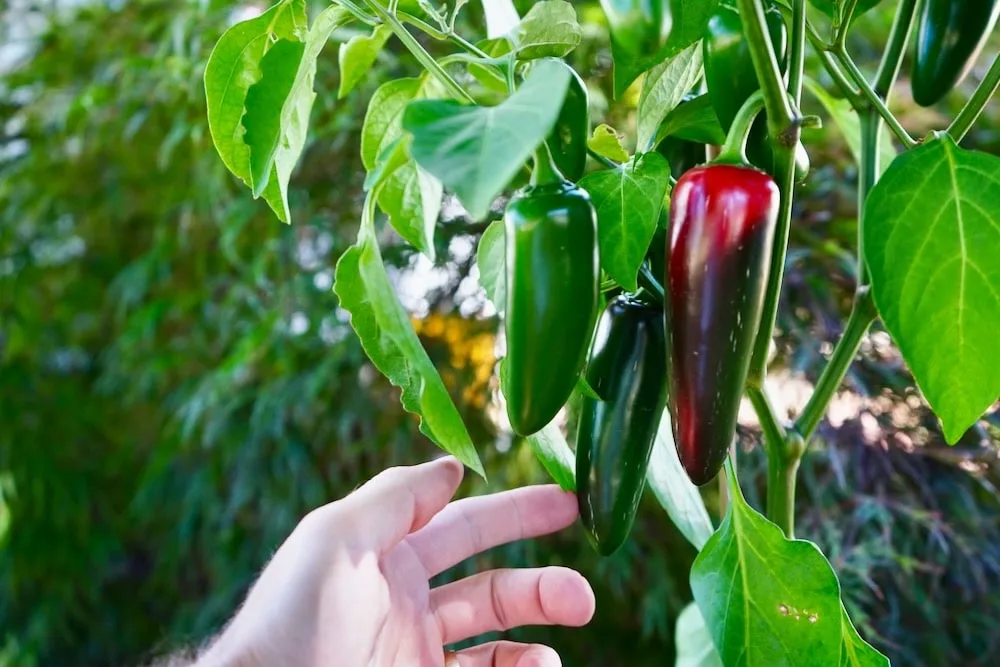
This post is tailored specifically to growing jalapeños in containers rather than in the ground. For a general article on growing pepper plants, check out our post about growing peppers from seed here.
This will also assume you are starting your jalapeño peppers from seed in the spring. If you are buying plant starts, you can skip ahead to choosing a soil.
In This Article:
- Jalapeño seeds
- Planting
- Choosing soil
- Fertilizing & Watering
- Transplanting
- Pruning
- Choosing a container
- Jalapeno plant problems
- Harvesting
- Saving seeds
- Jalapeño pepper uses
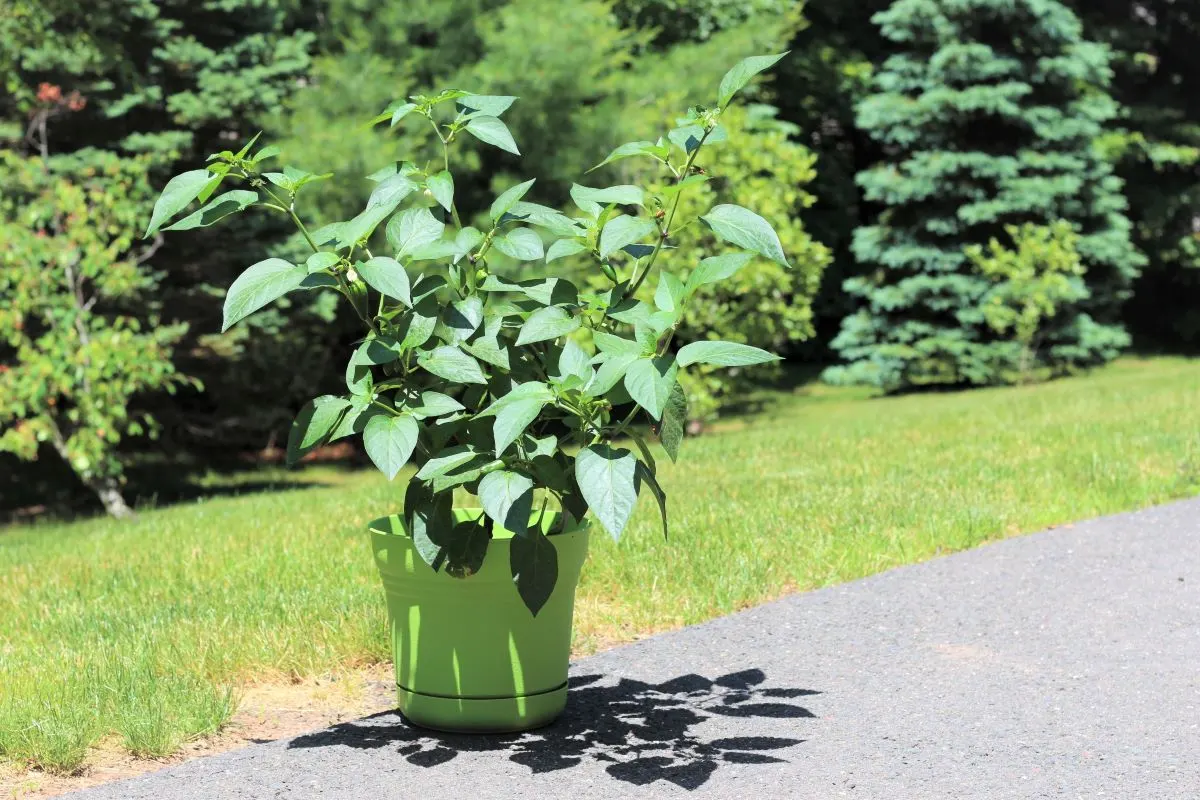
Buy Jalapeño Seeds and Supplies
It all starts with a seed. Or, ideally, a packet of many seeds. Jalapeños are among the most commonly grown pepper variety, so you’ll have no trouble finding seeds.
See all of our recommended supplies for growing peppers here.
Since jalapeños are so common, you’ll likely have no problem finding seeds at your local nursery or hardware store. However, if you are looking for some of the more interesting varieties of jalapeños, you may have to buy online.
We have bought seeds from many online retailers, and have listed our favorite seed suppliers here. You’ll find a wide range of jalapeño types, from purple jalapeños to the extra spicy jalafuego.
When we grew 8 unique jalapeño varieties one gardening season, our favorites were the Goliath jalapeño and the gorgeous NuMex Lemon Spice.
Planting Jalapeño Seeds (Germination)
Planting pepper seeds is easy. However, there are a few important things to know before slapping some seeds in a pot of soil. Namely, the ideal timing and environment for germination.
When to plant jalapeños
For most Northern Hemisphere growers, you will want to plant jalapeño seeds around 6 weeks before the last chance of frost. This will give the plants enough time to grow to maturity and maximize yields before the end of the growing season.
See when to plant peppers for every climate zone here. Also, try this free tool and enter your postal code to determine when to plant.
As an example, we live in the Northeast US and we plant most of our pepper seeds in mid to late March. Some jalapeño varieties mature more quickly than others, and are a great choice for growers in cold climates.
How to plant jalapeño seeds
Jalapeño peppers usually germinate without issue, especially when they are fresh. Older seeds or certain varieties may require special methods for better germination.
To plant seeds:
Fill some seed trays or small pots with pre-moistened potting soil and plant 2-3 seeds in each cell. The seed depth should be approximately 1/4″ with just a light covering of soil. Water gently after planting.
Germination tips:
- Keep the soil moist and humid. These seed trays come with a humidity dome to keep the soil from drying out too fast. Fan out the tray and spray with water about once per day.
- Keep the soil very warm. The ideal temperature for pepper seed germination is between 80-90°F. If you have a cold house, you can use a seed heating mat for much faster sprouts (up to 4 days quicker!).
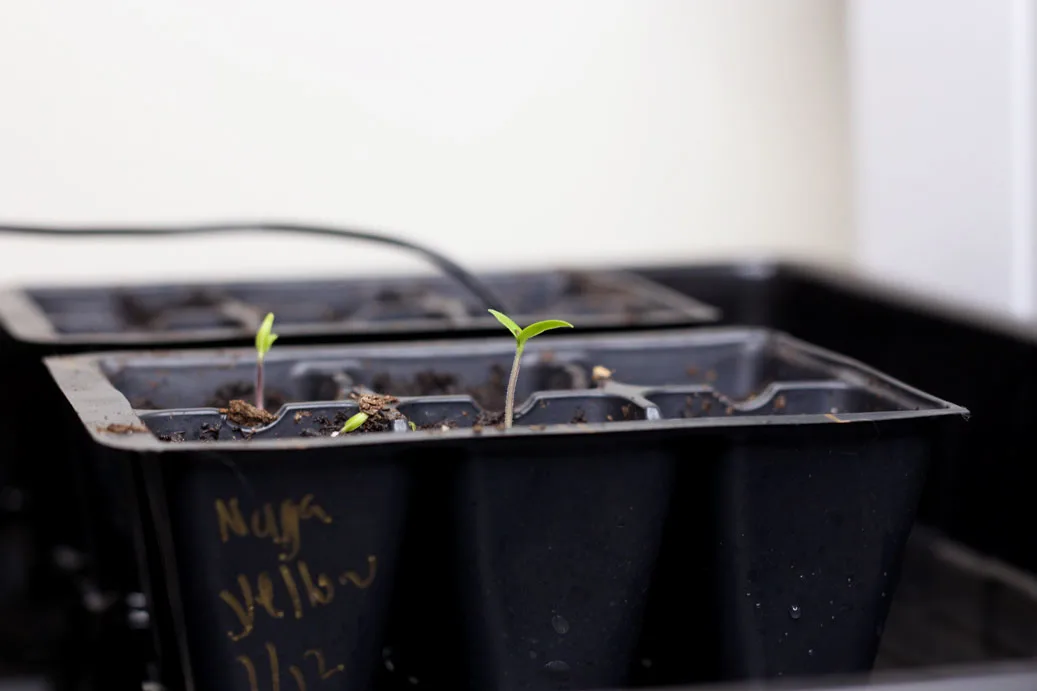
How long until jalapeños sprout?
Jalapeños will typically sprout within 4-7 days. This will vary based on the age of the seeds, and the conditions under which they are germinated. Once your seeds sprout, they need light. A sunny window won’t be enough to grow the best plants.
Get a grow light and give the seedlings 12-16 hours of light per day starting immediately after sprouting.
Best Soil For Jalapeños
Buying soil for your peppers can be stressful. There are lots of options on the market, all of which claim to be the best soil for potted plants. We have tested many different brands of potting mix to find our favorite for peppers.
We currently use Fox Farm’s Happy Frog soil for our potted pepper plants. Make sure you buy your soil from a reputable source like Home Depot or Lowe’s to avoid poor storage conditions. The last thing you want is soil full of insect eggs!
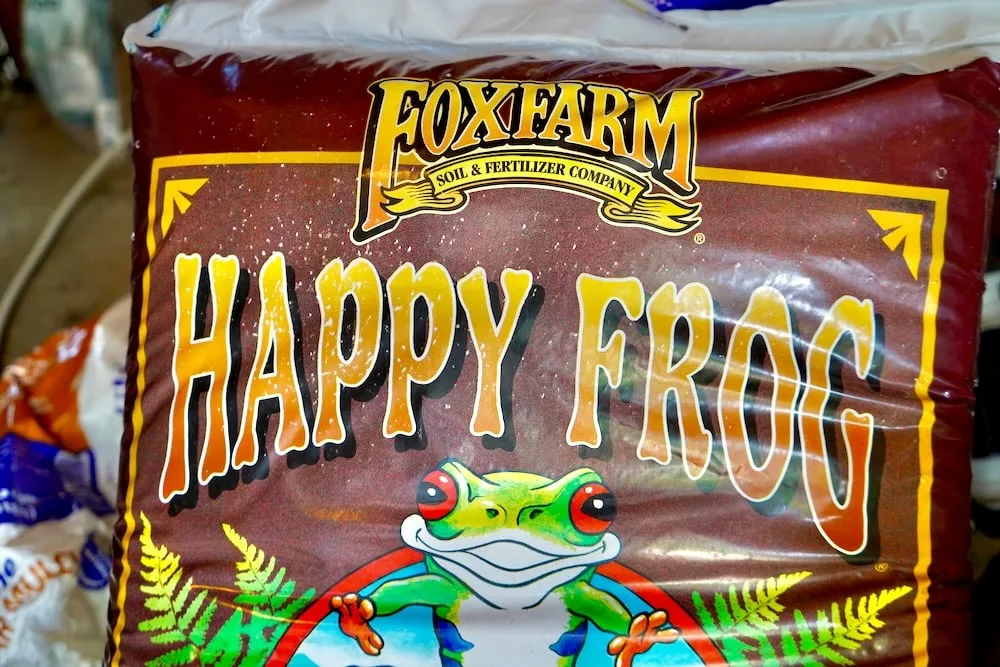
See our favorite soils for growing peppers here.
Fertilizing and Watering Jalapeños
Once your jalapeños sprout, they will need a consistent schedule of both water and fertilizer to be happy. Young jalapeño plants don’t need too many nutrients, so you’ll want to be careful not to over-feed.
For the first few weeks of growth, I like to rely on the potting soil to feed the plants. This means no fertilizer for the first 4-6 weeks of growth (as long as the potting soil has nutrients added). If you’d like to feed the plants, I recommend diluting the fertilizer early on to avoid over-feeding.
After your plants have matured and are beginning to produce fruits outdoors, then is a good time to supplement with fertilizer. This ensures the fruits will develop properly, and that the plants will produce their maximum yield.
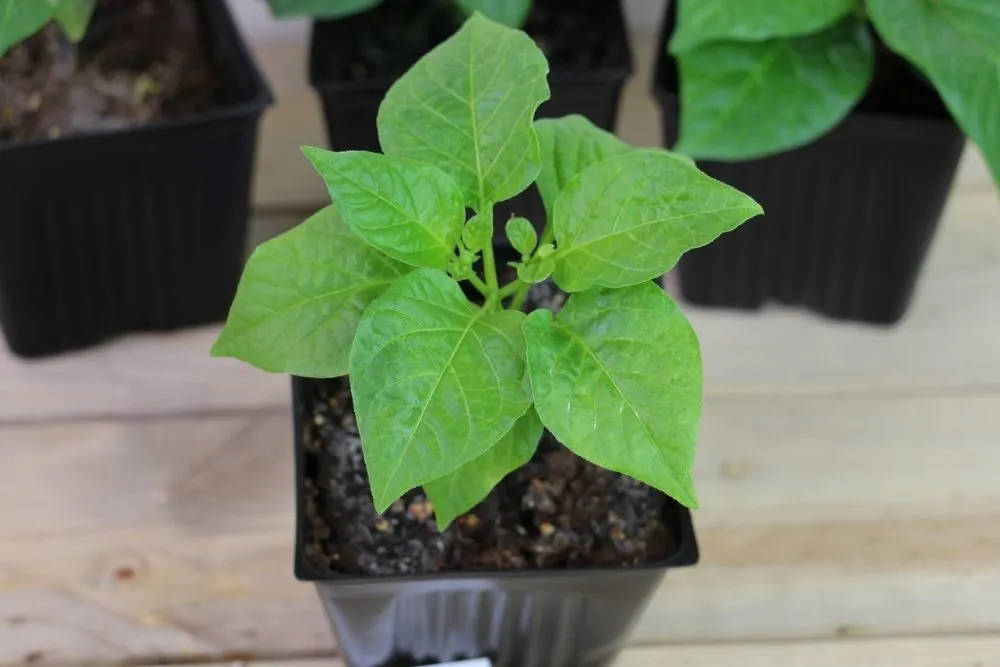
Which fertilizer should I use for jalapeños?
So, what is the ideal fertilizer for growing jalapeños? I’ve experimented with many different fertilizers, and I can recommend 3 brands.
Miracle-Gro Organics – Get it on Amazon
This water-soluble organic fertilizer is excellent for early stage growth. The high nitrogen levels will lead to well-developed leafy growth on your jalapeño plants. Later in the season when your plants begin producing flowers, simply cut back on feeding strength to avoid too much nitrogen. If you want a one-stop-shop for jalapeño fertilizer, this is it!
Espoma Garden Tone – Get it on Amazon
This is perhaps the simplest method of fertilizing peppers. Garden Tone is a slow-release all-purpose fertilizer that is applied once or twice per season. It should be mixed into the soil at the beginning of the year, and can also be applied mid-summer as a side dressing (sprinkled around the plant’s stem). I especially like this blend for in-ground plants.
Fox Farm Trio – Get it on Amazon
What I love about this fertilizer trio is the straightforward application schedule. Each bottle of fertilizer is designed for a different stage of plant growth. You’ll use ‘Grow Big’ while your jalapeños are in their growth stage. Then, you will switch to ‘Big Bloom’ for healthy flower production. Finally, you’ll move to ‘Tiger Bloom’ through the harvest period.
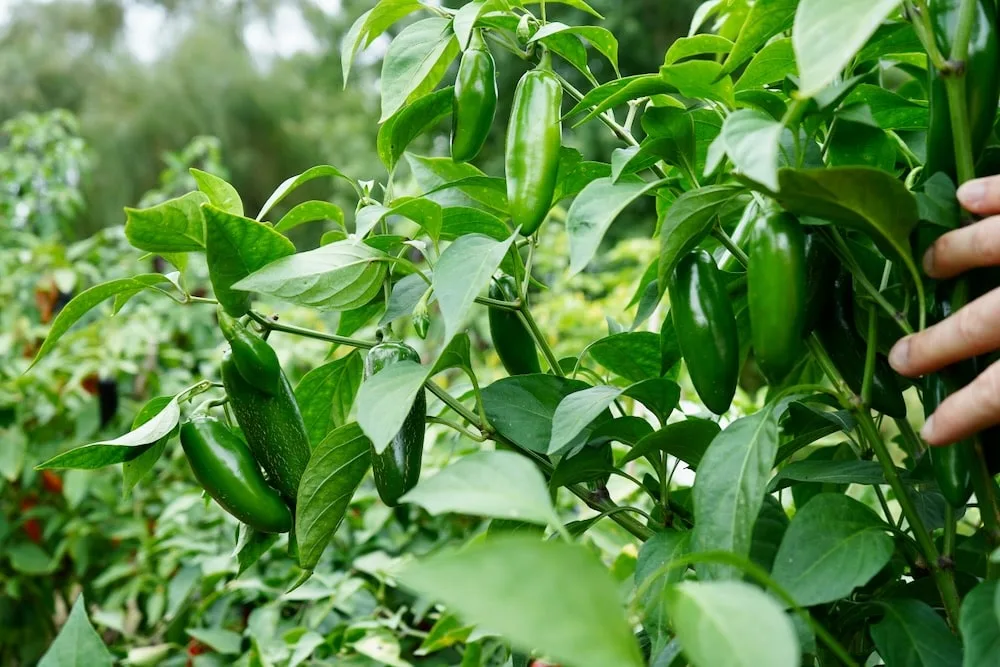
There are lots of other options out there, but I generally prefer water-soluble fertilizers for growing in pots. Liquid fertilizers also feed instantly, which help avoid nutrient deficiencies, but can also lead to over-feeding. Granular types have to be broken down first and rarely burn plants.
Read more about pepper plant fertilizer in our article here.
Watering jalapeño plants
This is perhaps the most common problem people have when growing jalapeños in pots: overwatering. Don’t over-care for your pepper plants!
Here are some basic rules to follow when watering your peppers:
- Allow the plants to dry out between waterings. The first inch or so of soil should be dry before applying more water. Thankfully, over-watering is difficult when growing in well-drained pots.
- Water in the early morning or evening. Watering in the evening is our preference. The water will have time to absorb into the roots with minimal evaporation from the hot sun.
- Water at the base of the plant, not over the leaves. Water at the soil level where the plant can actually use it. Watering over the leaves can lead to more disease issues.
- Don’t just water ‘every x-number of days.’ When it is hot and sunny, your jalapeños will use much more water than on cloudy, cooler days. Pay attention to the plant and only water when you are sure it needs it!
Learn (a lot) more about watering pepper plants in our article here.
Transplanting Jalapeños
If you planted in small seed cell trays, you’ll need to transplant the seedlings after about 2-3 weeks of growth. You can move the plants directly to their final pot, but I prefer to transplant into only slightly larger pots first.
In Dave DeWitt’s ‘The Field Guide To Peppers,’ we learned that transplanting to appropriately sized pots leads to faster growth than moving directly into a huge pot. We’re not sure about the science behind this, but we have always had very fast-growing peppers using this method.
From seedling trays, move the jalapeño plants to 3-4″ pots with fresh, pre-moistened potting soil. This will be their home for the next several weeks until they are ready to be moved into a final container.
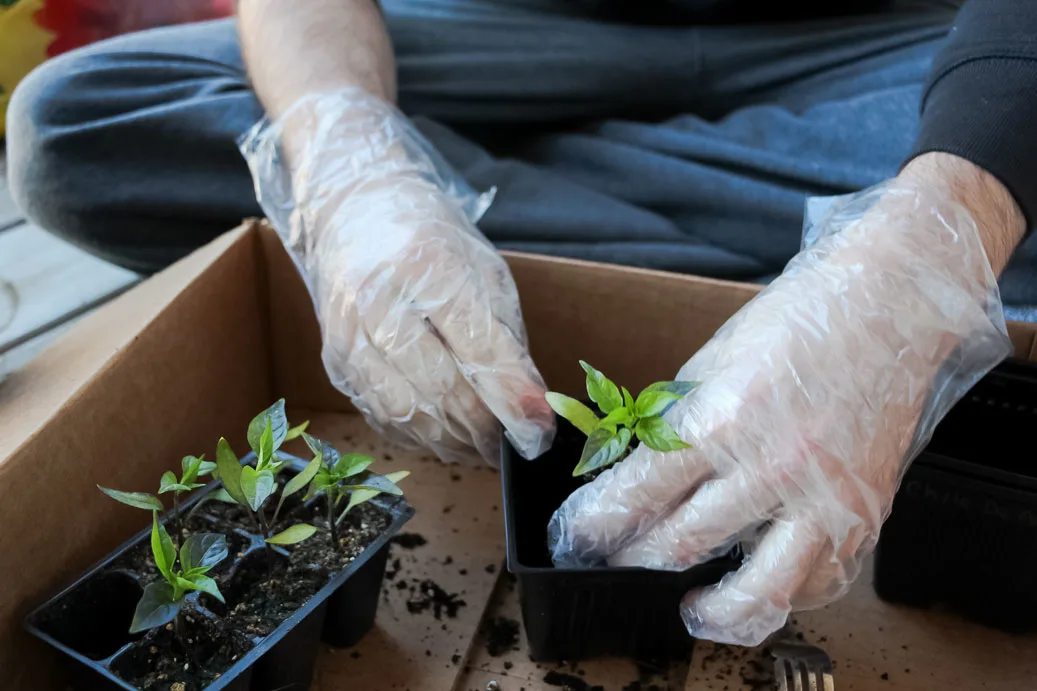
Pruning Jalapeño Peppers
Once your jalapeño plants have been alive for about 6-8 weeks, it is time to consider pruning. Pruning is the process of snipping away a portion of the plant to allow new growth to develop. The purpose of pruning is, in theory, to keep the plant lower and sturdier.
Note: I no longer prune pepper plants, as we have found minimal benefit in terms of yield or plant structure. While it doesn’t seem to harm jalapeños, it may be an unnecessary extra step.
How to prune peppers (video):
Picking A Container For Jalapeños
While your jalapeño peppers are growing, you can take the time to search for the perfect container. This will largely depend in your personal preference, but there are some factors to consider. Namely, how much space can you devote to your jalapeño plants?
The ideal container size for peppers will be different for each pepper variety. However, the rule of thumb is that the larger the pepper, the larger the pot should be.
What is the ideal container size for jalapeños?
Considering that jalapenos are medium-sized peppers, the ideal pot size is right down the middle. This means that jalapeños should be planted in 4-5 gallon pots or larger for the best harvest. Any smaller and you may be sacrificing some of the plant’s productivity.
Peppers can be planted in much larger pots (10+ gallons), and should be if you plan to overwinter them. However, if you are planning to grow your jalapeños and discard them at the end of the season, 4-5 gallons is perfect.
We have used these planters with good results – they are affordable and come in many different colors and sizes.
Read our post about choosing a pepper plant container here.
Jalapeño Pepper Plant Problems
Once your plants have been transplanted to their final pots, some general care is in order. Here are some things to watch for while your jalapeño plants grow and mature.
Curling leaves
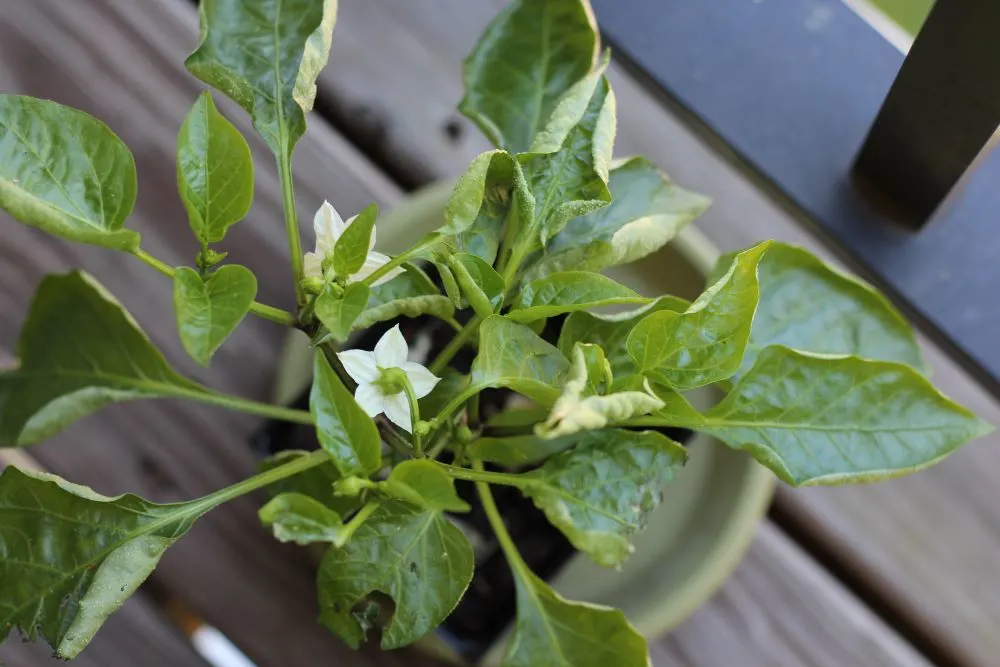
One of the most common issues with pepper plants are curling leaves. Your plants appear to be growing strong when suddenly you notice distorted leaves. What went wrong?!
There are many possible causes, from too much light, to too much water, to perhaps a calcium deficiency. But before you go self-diagnosing the problem, read our article about pepper plant leaves curling here.
Yellowing leaves
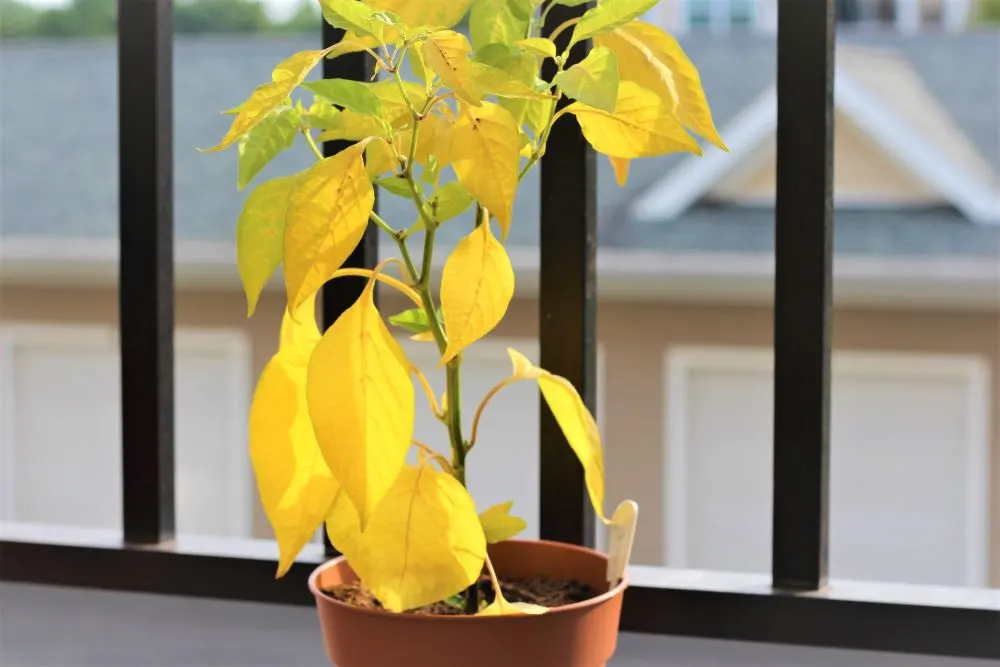
Another common sighting for jalapeño plants are yellowing leaves. If you start to see your leaves turning yellow, don’t panic. It could simply be natural leaf death.
However, if the problem persists and spreads, read our article on why pepper plant leaves turn yellow here. This will help you diagnose and fix the problem quickly.
Pests
Ever heard of aphids? Well, they like jalapeño plants as much as you do. However, they won’t eat the peppers, just the sap in the leaves. They multiply rapidly and can be difficult to spot. Once the problem begins, it can be tough to control. Catching them early is key. Read our post about aphid control here.
The best way to mitigate the risk of insect pests is to use preventative care. Plant companion plants to invite good bugs to your garden which will feed on aphids and other pests. Also, set up sticky paper to monitor for which pests are present, especially indoors.
If this isn’t enough and you have a bad infestation, try hosing off your plant with a spray nozzle to physically remove the bugs.
If all else fails, introducing (or attracting) beneficial insects like green lacewings can work wonders for your pepper plants. The larvae feed on aphids and other small insects, keeping the population low. These can, however, be tricky to source. Try calling local nurseries and hardware stores for availability.
Bacteria & fungus
If you notice brown or black spots on your leaves, your plant could have a bacterial infection. However, this is not the only cause of brown spots. Don’t just jump to conclusions and throw your plant away.
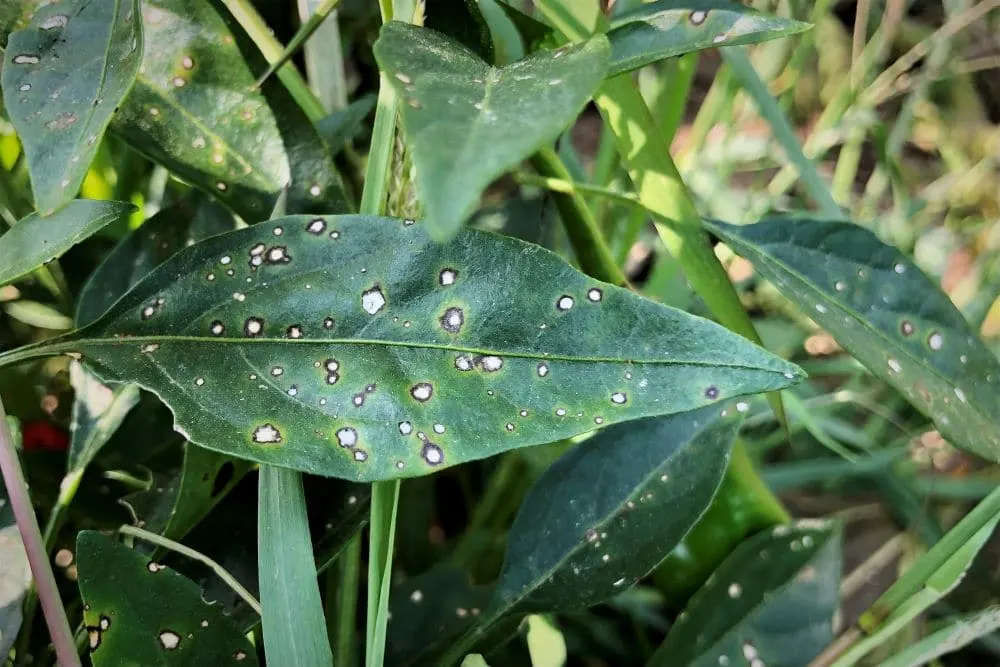
If you suspect bacteria, compare your leave’s spots to other, confirmed cases of the issue. Unfortunately, most bacterial infections in plants can spread easily to other plants and may require total removal of the plant.
The best way to avoid bacterial issues is to plant disease resistant peppers. Also, keep the bottom leaves away from the soil by bottom pruning. Soil harbors thousands of bacteria and spores, ready to splash onto your plant during a heavy rainfall. As another layer of protection, add a layer of mulch below your plants.
Harvesting Jalapeños
When you have finally reached the end of the growing season, and your jalapeños begin to ripen, you can start reaping the rewards.
Harvesting jalapeños is easy. Simply pull the pepper in an upwards motion. The pepper should snap off right at the base of its stem.
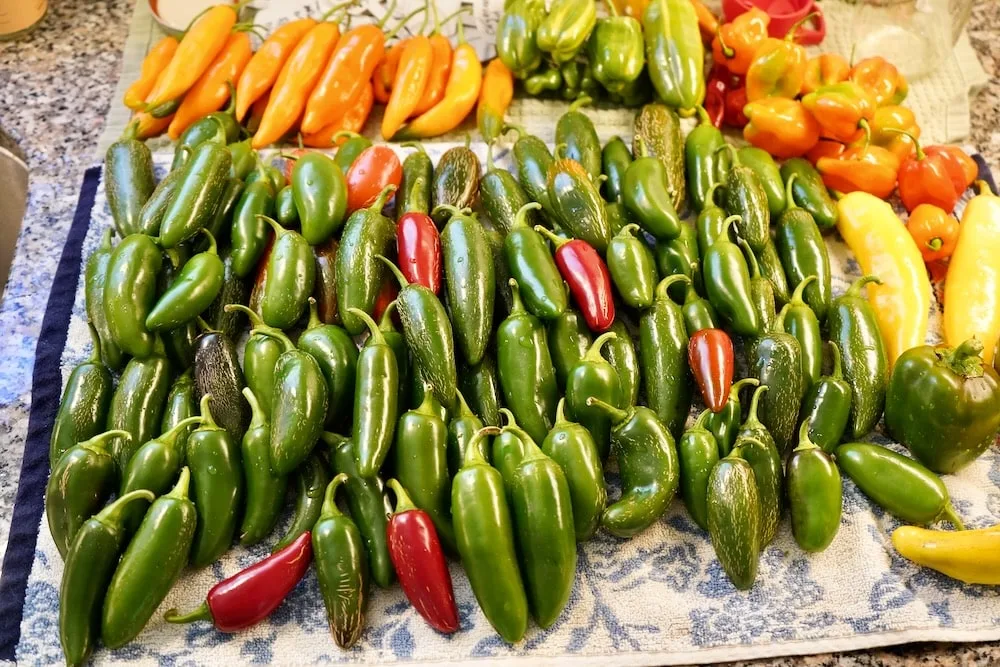
One thing to consider is whether you want green or red jalapeños. If you want some red jalapeños, leave them on the plant until they begin to change color. They will turn from green to almost black and finally red.
To grow the spiciest peppers, harvest just as the peppers ripen. Learn more about how to grow hotter jalapeños here.
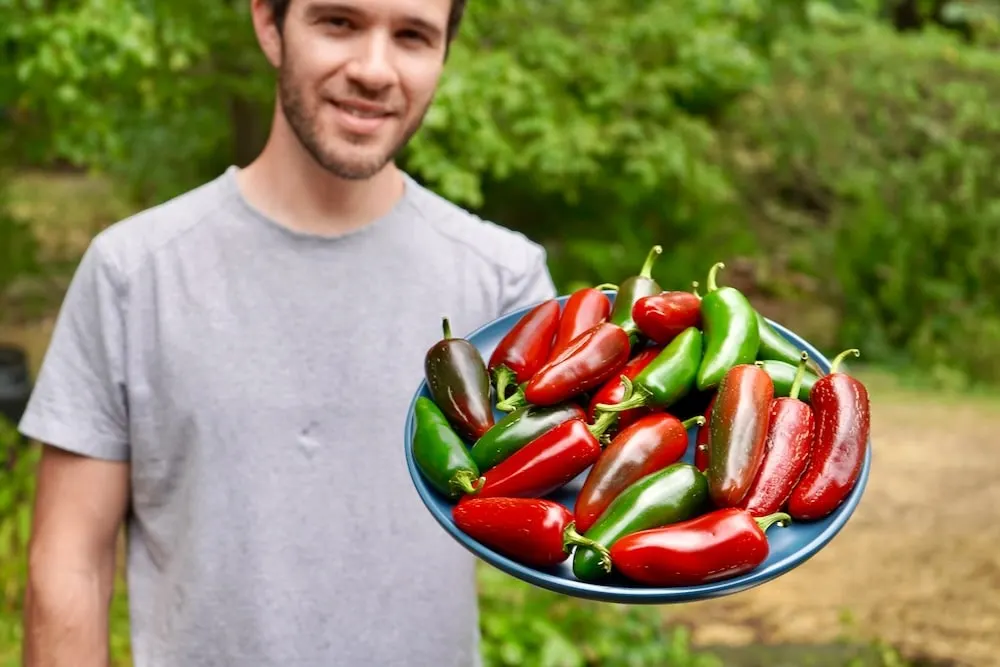
Tip: Want extra spicy peppers? Try water-stressing the plants. Allowing the plants to become overly-dry between waterings while the peppers are ripening causes the pods to produce more capsaicin.
Learn more about harvesting jalapeños in our article here.
Saving Jalapeño Pepper Seeds
If you plan to grow again next year, there’s no better way than to save your own seeds. This process is easy and highly satisfying. Each pepper produces dozens of seeds, so even just 1 or 2 peppers may be plenty for your needs.
The basic principles for saving jalapeño seeds are:
- Use fully ripened peppers. Unripe peppers may contain under-developed seeds.
- Dry out the seeds thoroughly. Lay the seeds out on a plate in a place with plenty of airflow. Moisture is an enemy of storing pepper seeds.
- Store the seeds in a cool, dry container. We recommend using a food-safe desiccant packet to keep moisture and oxygen out.
- Avoid saving seeds from hybrid varieties. Hybrids will not grow true to self, so always buy fresh hybrid (F1) seeds.
Learn more about saving your own pepper seeds in our article here.
What To Do With All Your Jalapeños
After all is said and done, you hopefully have a bunch of fresh jalapeños. But what now?!
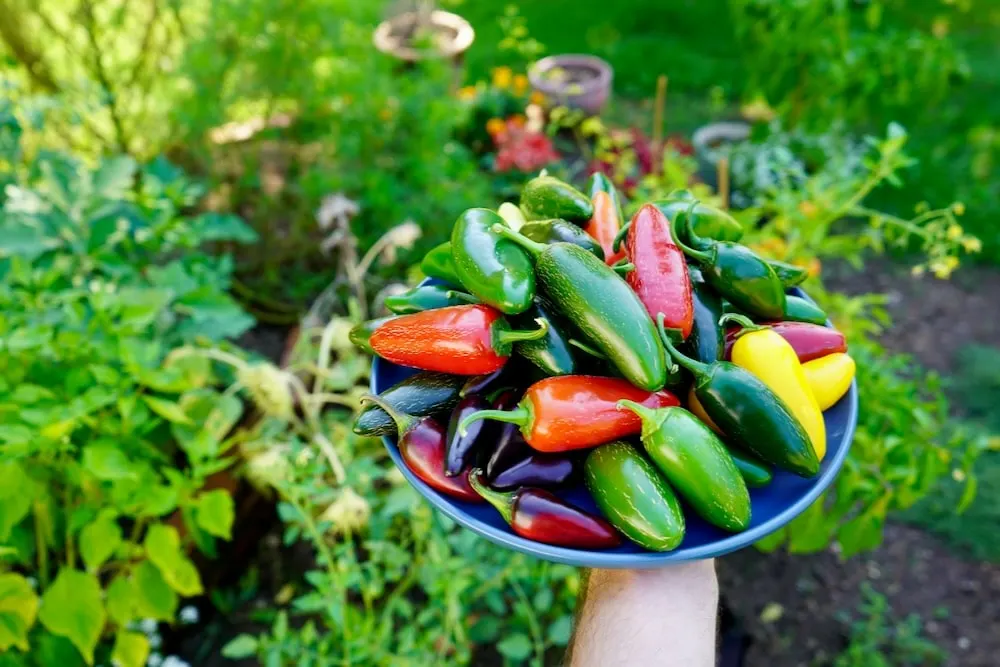
You have lots of options for using your jalapeños. I recommend using them for a variety of purposes. We usually use some right away, give some away to family, and then preserve whatever is left.
Here are a few options:
- Pickled jalapeños – our favorite preservation method!
- Jalapeño salsa
- Jalapeño hot sauce
- Dehydrated jalapeños
- Roasted jalapeños
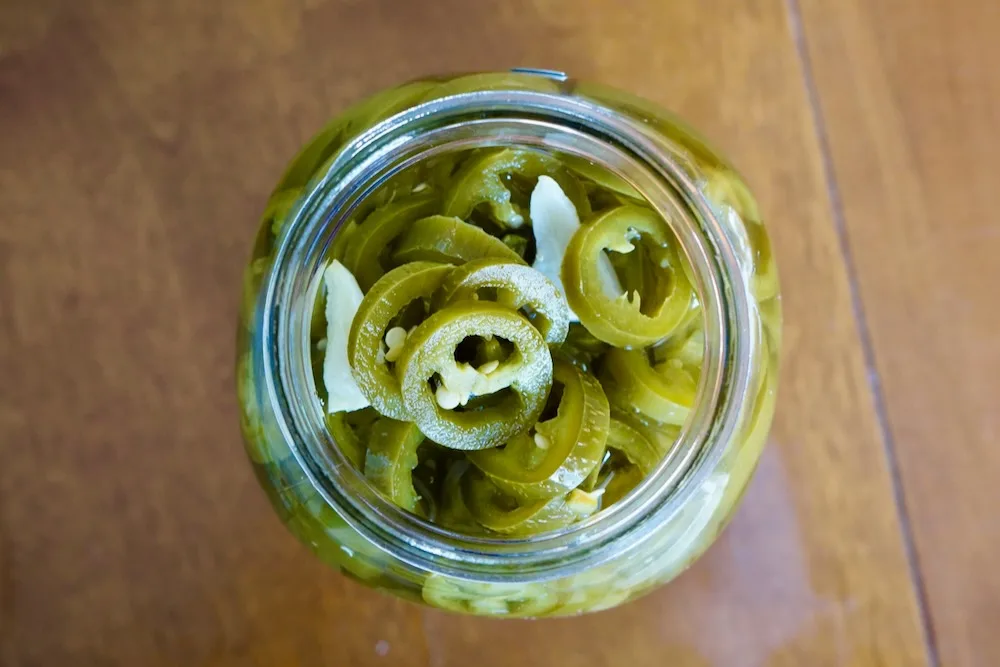
You can also make some jalapeño poppers, or chop them up and use them in a stir fry. Jalapeños also make a great addition to salsa (try our pineapple jalapeño salsa here) or guacamole. Learn all our favorite ways to store jalapeños here.
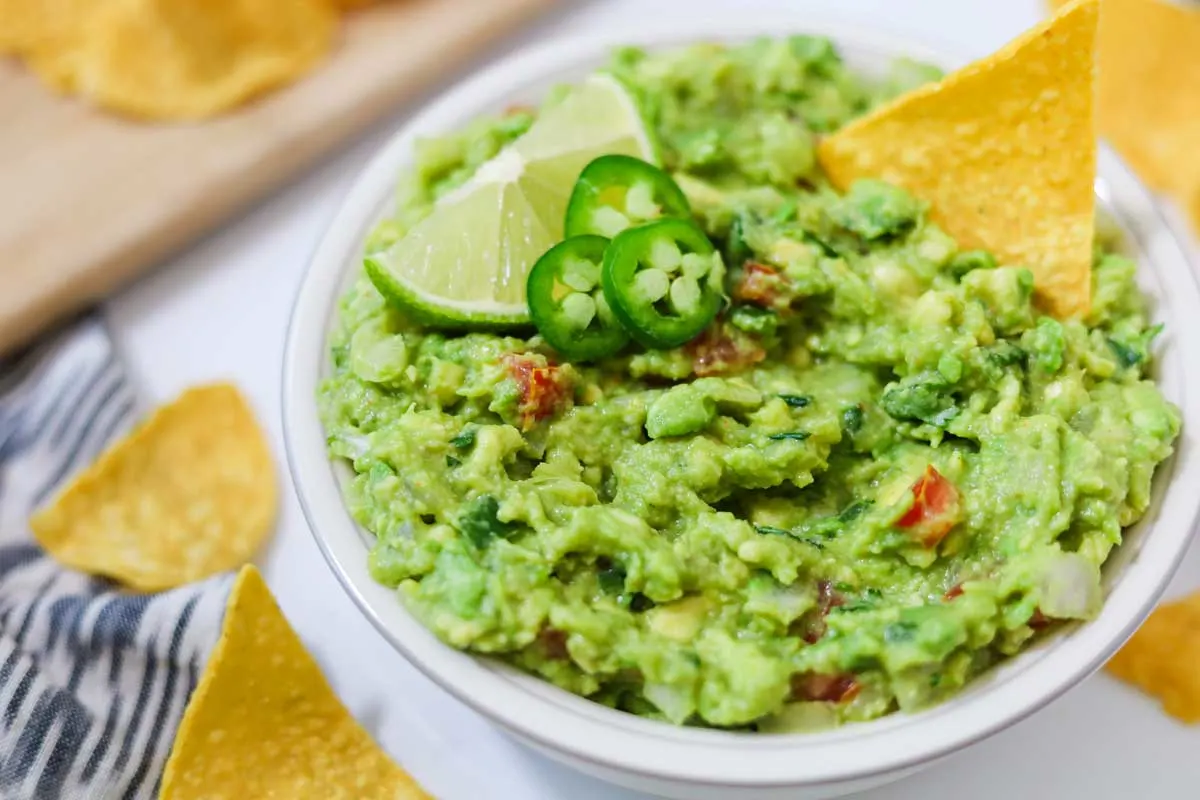
I hope this article helped you with growing jalapeños in pots this year. I love container gardening for a simple way to grow peppers. Let us know how your jalapeño plants are progressing! If you have questions or suggestions, leave them in the comments below.
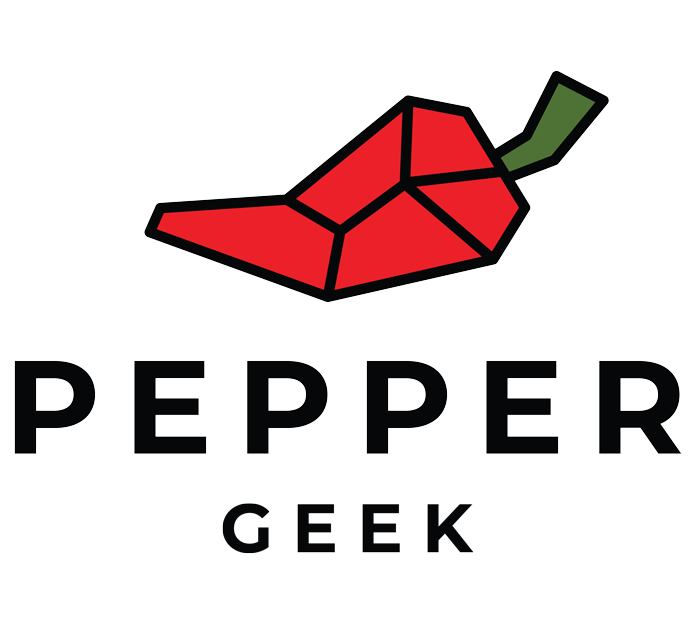
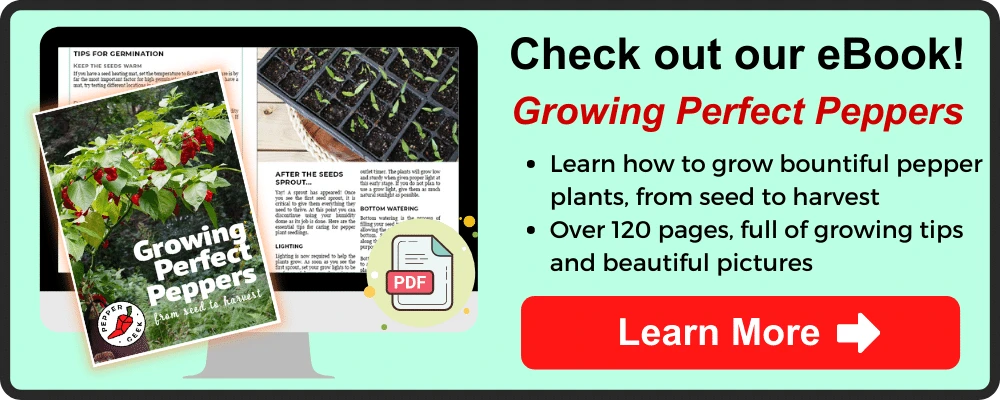
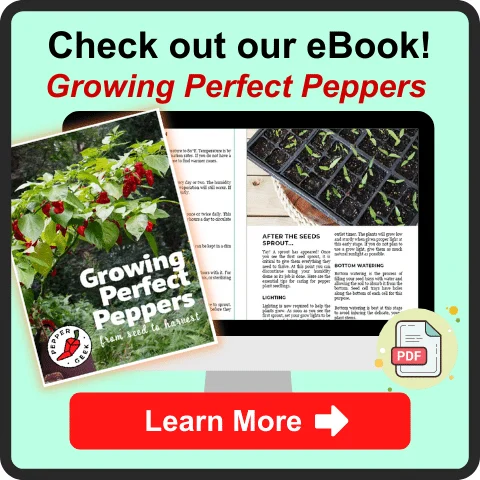
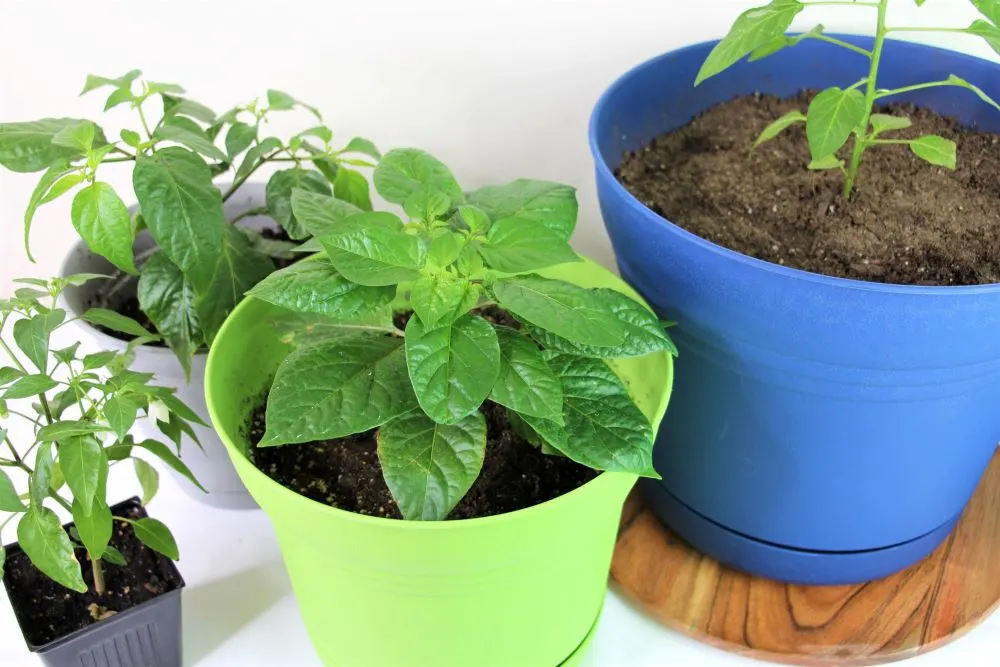

Dan
Saturday 5th of August 2023
The bottom of some of my peppers are turning brown and shriveling. Too much water??
Erik Conway
Saturday 1st of July 2023
Hello, will a jalapeño plant grow back after it dies off, read they will grow back the next year if not pulled up.
peppergeek
Sunday 2nd of July 2023
If they experience a frost, it is unlikely they will grow back. They are perennial plants, but only in zones that don't get winters.
James
Wednesday 14th of June 2023
Hello, 2 questions-My jalapeno variety says max height 24". Does that still need a 4-5 gallon pot? Second, I have it (along with a habanero and something that home depot labeled a fajita pepper plant) on a window sill that is slightly angled. I noticed all the plants were getting a slight lean today so I rotated them so they grow straight. Is there any issue with this? Thank you and thank you for the info!
peppergeek
Thursday 15th of June 2023
Yes I would still use a large pot to get the best possible yield from your jalapeños. And yep, turning the plants is a good way to avoid window plants leaning over
CJ
Wednesday 24th of May 2023
HELLO THERE CAN I PLANT PEPPERS NOW
peppergeek
Thursday 25th of May 2023
It is a bit late to grow from seed in most zones. You can definitely get some plants from the nursery and grow them out successfully. If you want to start from seed, start ASAP, and grow varieties that have a shorter time to maturity (green jalapeños/bells, etc.)
Margie McNeil
Friday 28th of April 2023
Can I plant flowers in the same pot as the peppers?
peppergeek
Saturday 29th of April 2023
Yes you can, but depending on the type of flower, you may or may not want to. Smaller flowers are okay to fill in the soil with a sort of natural mulch (we have used alyssum successfully for this), while I probably wouldn't recommend larger flowerssuch as sunflowers, zinnias, cosmos, etc.